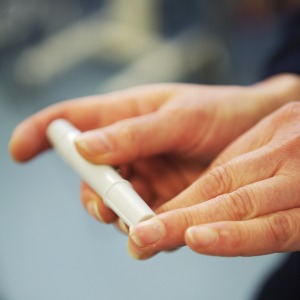NICE advisors have approved a controversial ‘all or nothing’ QOF indicator that could see practices only being paid if they carry out eight separate checks in each diabetes patient, despite warnings from pilots that GPs found it demotivating.
The decision means the ‘bundled’ diabetes indicator – incorporating up to eight clinical processes, such as cholesterol, blood pressure and foot checks – will be included in negotiations over the 2015/16 GP contract.
This was despite results from the pilots, unveiled at the NICE QOF advisory meeting taking place in Manchester today, showing that practices testing the new composite indicator believed it was ‘unacceptable’, with less than half (45%) supporting its introduction into the QOF, while 40% were not supportive.
Practices with reservations cited practical issues around the delivery of care at different times in different places, potential unfair impact on practice achievement and risks of demotivating general practice.
The NICE committee acknowledged the ‘all or nothing’ nature of the indicator ‘might have a demotivating effect on practices and may raise exception reporting rates, but agreed they would put forward the bundled indicator for inclusion on the NICE menu for 2015/16.
The indicator will now be put forward for negotiations between the GPC and NHS England for next year’s GP contract.
The bundled ‘all or nothing’ diabetes indicator – in which practices are rewarded only if they achieve all of a series of process indicators – was put into development at the behest of the Department of Health after National Diabetes Audit results found many patients were not undergoing all of their recommended check-ups on annual basis, even though practices were achieving high scores on individual diabetes QOF indicators.
Related stories
Analysis: What the proposed indicators for the 2015/6 QOF mean for GPs
In full: NICE proposed indicators for 2015/16 QOF
GPC warns plans for composite diabetes indicator will ‘completely demotivate’ GPs
Despite objections raised by the GPC and an independent review concluding differences in coding contributed to disparities between the audit and QOF results, NICE went ahead with piloting an indicator made up of eight of eight clinical process measures – see below – this year.
During pilots of the bundled indicator, achievement of all eight processes improved from 46% in 2012/13 to 27% during the six-month pilot, which the QOF researchers said would translate to a slight increase to 53% if the results were extrapolated over a full year.
However, there was an increase in exception reporting, which rose from 7% at baseline to an estimated 11%.
Summing up, committee chair Dr Colin Hunter noted that despite some process indicators being removed, the bundling of indicators was ‘feasible’.
Dr Hunter said: ‘What we might be able to say is bundling of a number could be considered, but that the individual nations would need to continue to monitor the impact, that there may be unintended consequences in terms of increased exception reporting and so could diminish the care of some patients, although it will enhance the care of others.’
Speaking to Pulse after the meeting, Dr Hunter explained he did not personally support the idea of bundling indicators, but the consensus view of the committee was to recommend the composite indicator.
Dr Hunter said: ‘What we’re saying is this composite indicator in diabetes would work and deliver. There is a view it might improve quality of care because you might get more patients who get all the facets done. But there is already some evidence that exception reporting might increase, which might actually mean across the piece there is a downside.
‘We will put a caveat in about the potential downsides.’
He added: ‘I’m an “unbundler” myself – I think it’s much clearer to have the individual processes, it means people go through it in a more logical way. But this is NICE’s view.’
QOF expert Dr Gavin Jamie, a GP in Swindon, said the complexity of the indicator could put off GPs.
Dr Jamie said: ‘It will inevitably push up exception reporting because it If there’s any one of eight things is not feasible you’ll have to exception report them for them all.’

















